Photography / Greek Numismatics pt16: Honorable mentions (2 of 2)
Today the series is concluded, with the second part of "honorable mentions", in terms of Greek Themes on coins. On part 15, we left off in 1973. Today we'll cover the period from 1973-2000.
1976-1988 / 20 Drachma on cupronickel:
This was the largest denomination of the 1976 series and the "heads" side featured Pericles with his helmet. The front side featured an ancient temple or Parthenon-style building. Coin catalogues, and even NGC, write that it is the "Parthenon" but the Parthenon has 8 marble columns, not 4. Whatever the case, this is a distinctly ancient Greek theme. The coin remained in wide circulation until the mid-90s - and most Greeks have some lying around in their houses:
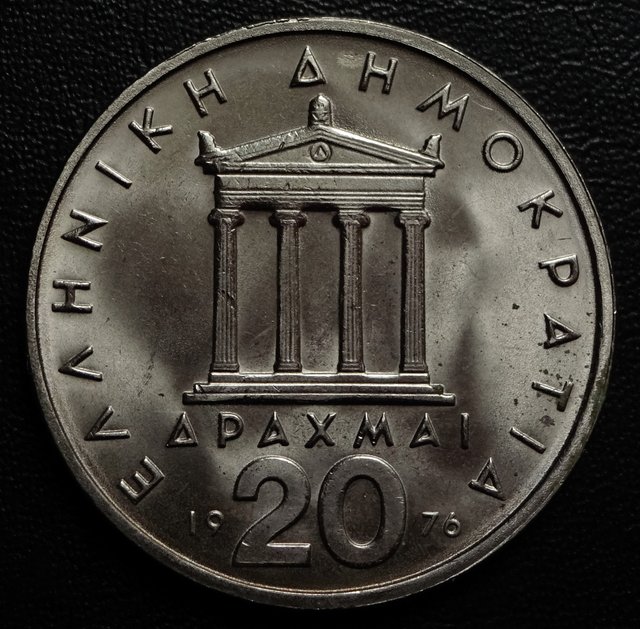
1976-1978 / 10 lepta on aluminum:
This was the lowest denomination of the 1976 series, and people weren't really using it. The inflationary pressures of the mid-70's ensured that they quickly became irrelevant. The mint knew of course, so they kept the numbers minted rather limited. Their minting was more like a political choice that tried to convince people that inflation wasn't that high: "Hey, money has value, that's why we issue these denominations". But their face value equivalent in dollars should be around the 0.002-0.003$ range back then - not even a penny.
The bull motion and the minimalistic design is interesting though.
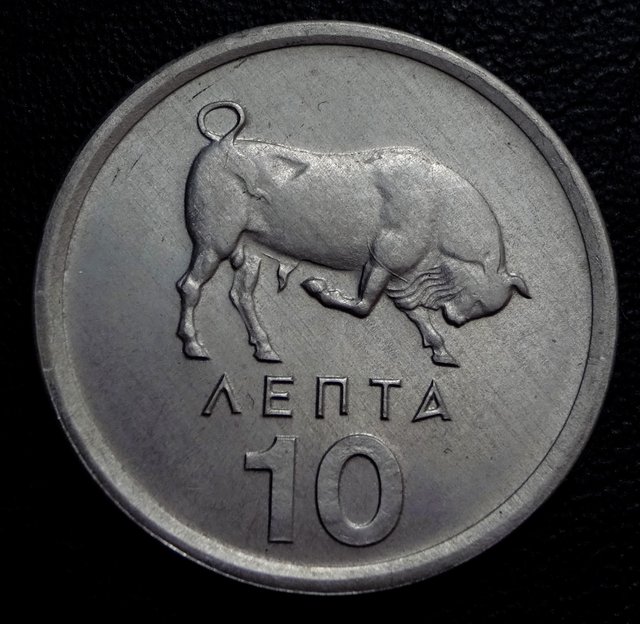
1976-2000 / 10 drachma on cupronickel:
This is the other side from the head of Democritus, featuring the atom - since he first theorized its existence. Democritus and the atom are thematically connected, so to speak. The coin was one of the most commonly circulated ones, up to 2002 when it was replaced by the Euro-denominations:
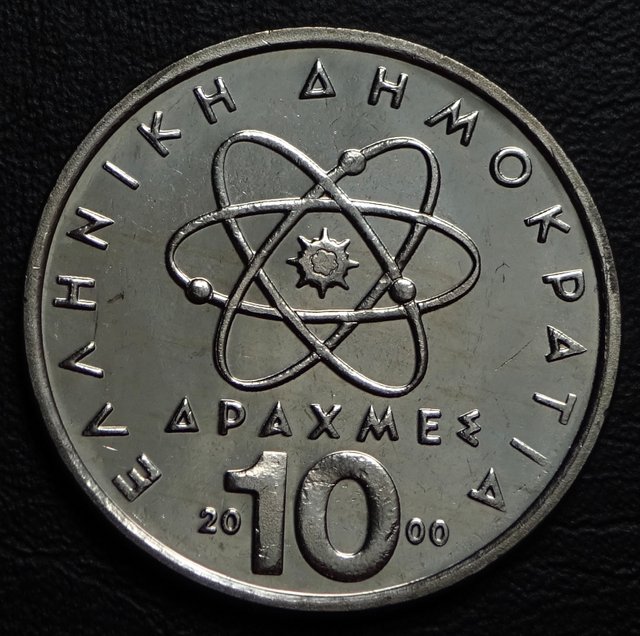
1976-1986 / 2 drachma on brass:
This is themed after the Greek Independence war of 1821, featuring rifles and a branch... It was very widely used in the 80's.
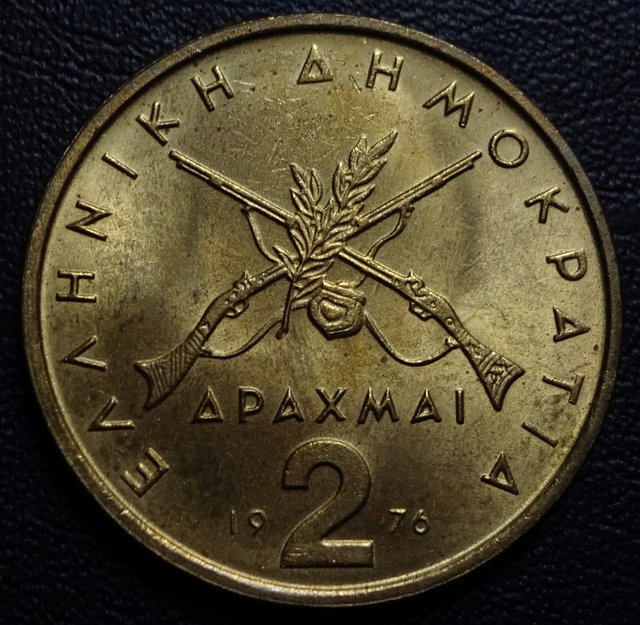
1988-2000 / 2 drachma on copper:
This is the successor of the prior 2 drachma, again themed from the Greek Independence war of 1821, more focused on naval warfare. It was smaller and less lightweight than its predecessor, thus reducing copper content spent by the mint.
This was less used because inflation during the late 80's rendered it useless. However its melt value (as 99.9% copper) exceeded the coin's face value. In theory a 2 drachma copper coin should be exchanged for 0.00588 euro based on the face value. However current melt value is at 0.0157 euro - three times higher. No wonder why they are using copper plated steel these days for the eurocent denominations... the face value would be lower than the metal content.
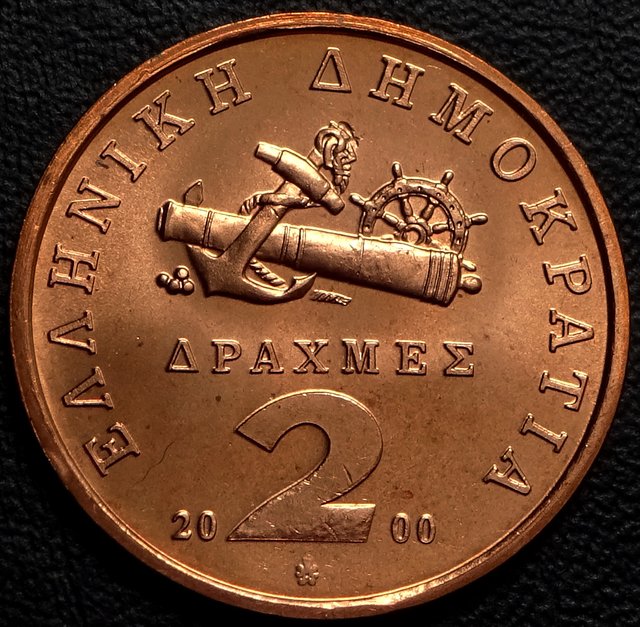
1990-2000 / 100 drachma on brass:
The star of Vergina was one of the main symbols of the Macedonian empire. This is thematically connected with Alexander the Great, being on the other side of the coin. As I've said when presenting the head figure, this is a truly majestic coin while uncirculated. It's design, proportions, depictions and color are just right in terms of coin attractiveness.
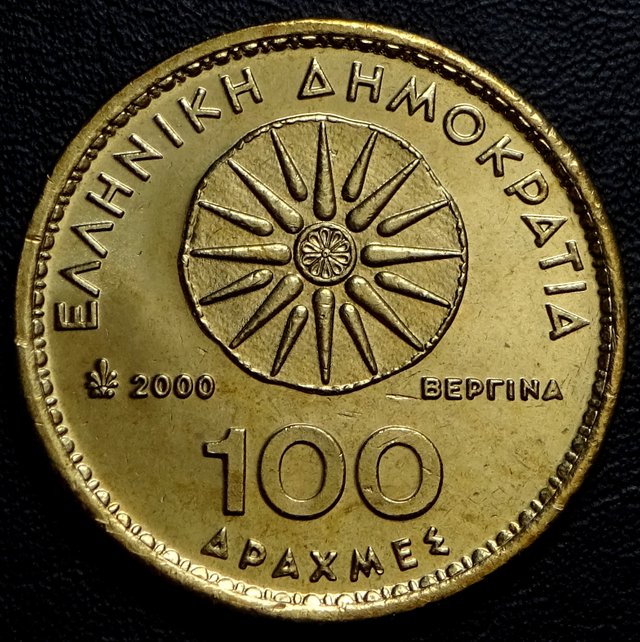
And this concludes this series of modern Greek numismatics. Obviously there are hundreds of coins / themes / heads one could choose to show, but IMO those I've published are the more representative ones in terms of Greek themes or aesthetic appeal. In general, modern Greek coins aren't visually attractive, which is a shame, so those which happen to be attractive are just the exception to the rule, rather than the rule.
Photographic settings: Compact Sony DSC-WX220 / ISO 100 / EV -2.0 / Natural Light
Copyright notice: I release these in the public domain, for use or edit, by anyone, for any reason, with no attribution required.